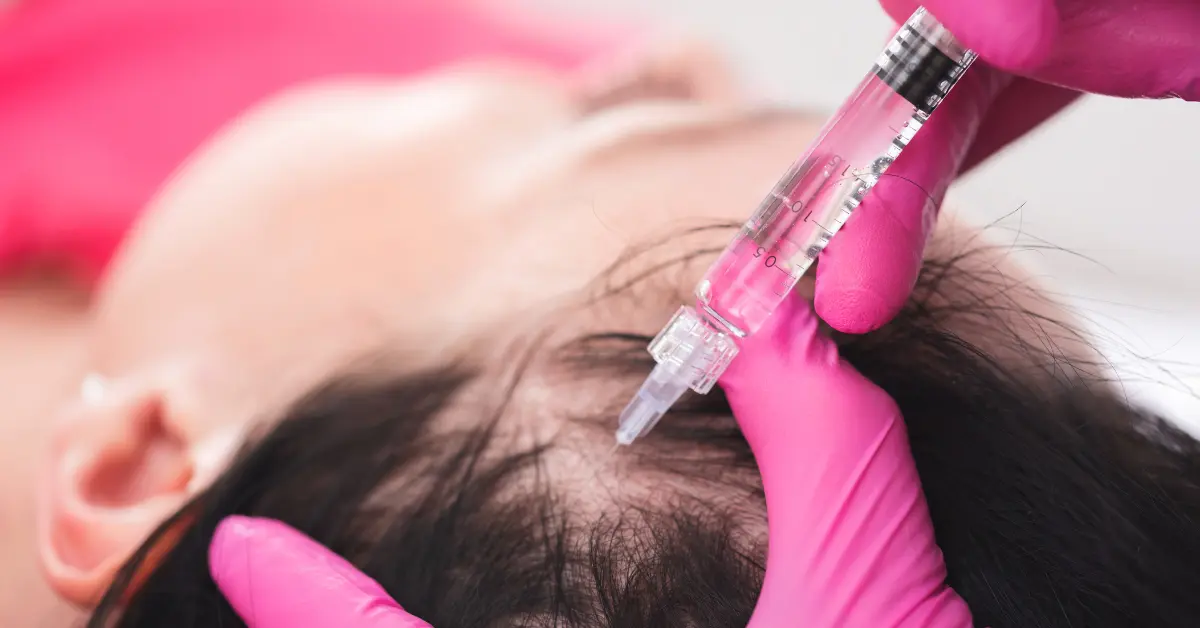Does PRP Work for Hair Loss?
Hair loss, thinning, and shedding are very common problems for many people.
Around 50 million men and 30 million women in America suffer from Male/ Female pattern baldness.
Various treatment options are available for hair loss, but the efficacy of some has been researched more than others.
One such treatment is Platelet-Rich Plasma (PRP) therapy.
We know about the use of PRP as a treatment option for conditions like Arthritis, ligament sprain, tears, etc.
But does PRP work for hair loss?
Read along to find out what PRP therapy is, how it works, and whether or not it is effective.
What is PRP therapy?
Platelets, also called Thrombocytes, are cells in the blood that are responsible for clotting and healing.
They contain growth factors and Cytokines that promote tissue repair and regeneration.
Generally, PRP has about five times more concentration of platelets than regular blood.
Plasma is the liquid part of the blood.
It is largely made up of water and proteins.
The primary function of plasma is to provide a medium for the red blood cells, white blood cells, and platelets to circulate.
PRP therapy involves drawing blood from the patient and then centrifuging it.
This is done to separate the platelet-rich plasma from the other components of the blood.
After centrifuging, the platelet-rich plasma is injected into the scalp at the site of hair loss.
Working of PRP

PRP therapy is thought to work by stimulating hair follicle growth.
It also helps prolong the hair cycle’s Anagen (growth) phase.
PRP may also improve blood flow to the scalp and reduce inflammation, which can contribute to hair loss.
In the world of sports medicine, doctors have used PRP to help heal muscle and tendon injuries. With hair loss, research suggests injecting the platelets found in a patient’s blood and activating growth factors can improve the blood supply to their hair follicles.
Bardia Amirlak, M.D.
Evidence for the effectiveness of PRP therapy
Research done to test the efficacy of PRP therapy as a treatment for hair loss is only partially conclusive.
But it has shown promising results.
A 2014 study of Androgenetic Alopecia patients found that PRP therapy every two weeks for a period of 3 months could increase the average number of active hair follicles.
However, this study included only 11 participants and could not be considered conclusive.
Another study included ten people who were given PRP therapy for three months.
It recorded an improvement in the number of hair, their thickness, and the strength of the roots.
But again, it needed to be bigger of a sample size to show any conclusive evidence.
A recent study with 60 patients examined the efficacy and safety of PRP compared to 5% topical Minoxidil.
At the end of this study, no significant difference was found in the content of the hair between the groups.
But, it established that the side effects of PRP were minimal and showed promising results.
This might be helpful to make the patient stick with the treatment.
A 2023 research analyzed 92 patients who were receiving PRP.
It was concluded that PRP helped improve their quality of life and works well as part of a multimodal treatment plan for hair loss.
Risks and potential side effects

PRP treatment is a low-risk procedure and does not usually cause significant side effects.
The procedure involves drawing blood, so ensure that you are hydrated and do not go empty stomach.
You might feel some bruising and soreness at the injection site.
But, since the treatment uses one’s own plasma, the risk of having an allergic or immune reaction is very low.
Some observed risks of using PRP injections include:
- Bleeding
- Nerve injuries
- Tissue damage
- Local infection and pain
Takeaway
There is promising research to show the efficacy of PRP for hair loss.
But, most of this research has been done on very small population sizes for the results to be conclusive.
Hence, it cannot be told for sure if this treatment would work for everybody or not.
Since your own blood is used in the injections, the therapy might not be as effective if the blood is not rich in platelets.
Check with your doctor to get your blood tested for platelets in addition to checking your hair health.
This will give them an idea that you are a good fit for PRP injection therapy.
Frequently Asked Questions
WowRx uses only high-quality sources while writing our articles. Please read our content information policy to know more about how we keep our content reliable and trustworthy.






